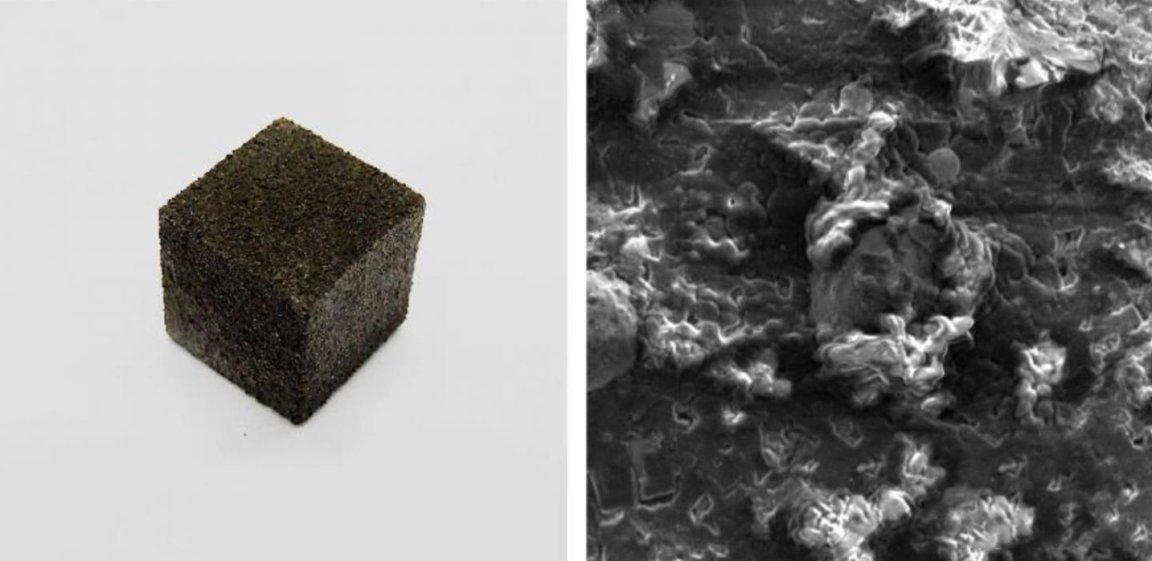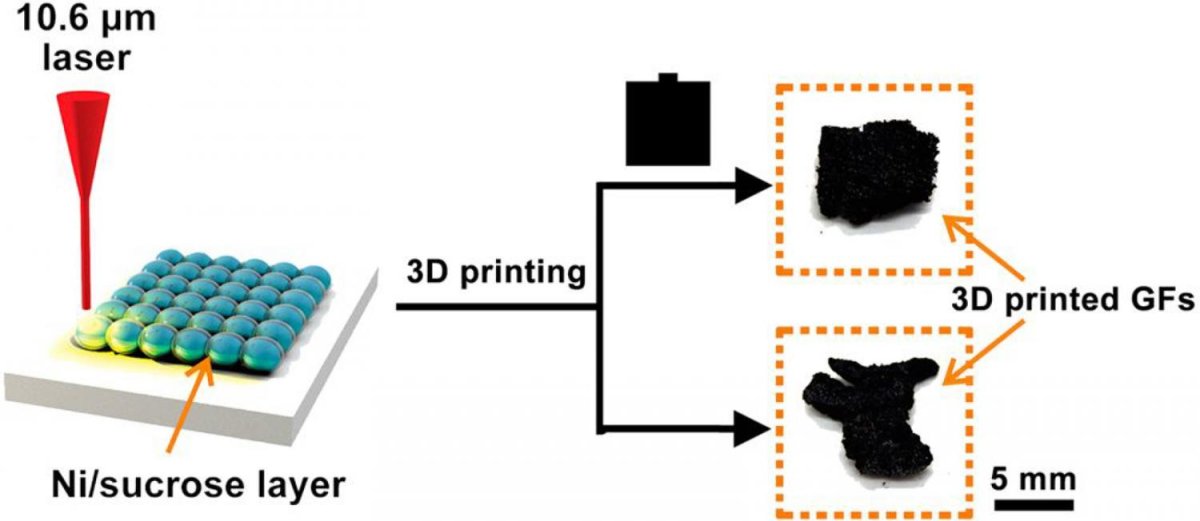
A New Graphene Production Method
Nanotechnologists from Rice University and China’s Tianjin University have come up with a way to make centimeter-sized objects of atomically thin graphene that’s pretty sweet. The method is simple, can be performed at room temperature, and only requires sugar and nickel in a process called “3D laser printing.” Due to the printing method, the scientists were able to control the shapes to the level of the pore and make them 99 percent air — retaining graphene’s lightness.
This is a landmark for the “miracle material” — composed of a single atomic layer of hexagonally linked carbon — which has paradigm-shifting potential due to its high strength (200 times stronger than steel) and conductivity.
“3D laser printing” differs from the commercially available 3D printing. Instead of sculpting using melted plastic pressed through the end of a thin needle, this process melts or “sinters” powders with a laser. Then, a new powder is applied to the cooled and solid layer beneath it, ultimately forming an object layer by layer.

After they realized that applying this form of printing to nickel and sugar produced graphene when the mixture cooled, the team optimized the time and laser power required to produce the material. The researchers recently published their results in the journal ACS Nano.
Co-lead author of the study Junwei Sha, a postdoctoral researcher at Tianjin University, said in an interview for a Rice press release that this is also a customizable process: “We should also be able to use this process to produce specific types of graphene foam like 3D printed rebar graphene (graphene reinforced with carbon nanotubes) as well as both nitrogen-and sulfur-doped graphene foam by changing the precursor powders.”
The Potential of Graphene
Graphene has been one of the most discussed materials of the decade, with possible applications in diverse fields ranging from increasing upload rates, to being used in quantum computers, to cleaning seawater, to bionic implants.
However, its progress has been impeded by our inability to mass-produce it — a problem which this process could solve. Rice chemist James Tour stated in the press release, “We have shown how to make 3D graphene foams from non-graphene starting materials, and the method lends itself to being scaled to graphene foams for additive manufacturing applications.”
There have been been other promising methods suggested for the mass production of graphene, including the University of Kansas’ use of detonating carbon-containing materials, and Brookhaven National’s Laboratory’s idea to “piggyback” it on industrial-grade glass.
Currently, though, we have a wonder material that could help the world advance into a new scientific era, but no existing manufacturing process. Let’s hope one of the methods scales up successfully so we can open the door and step into an exciting future.